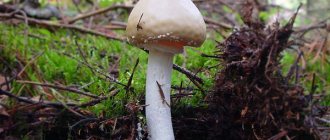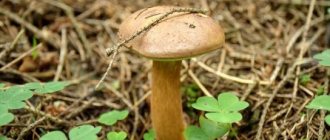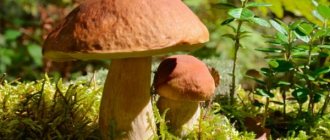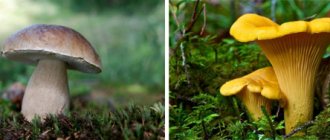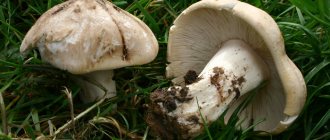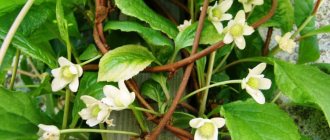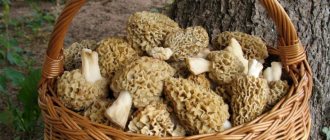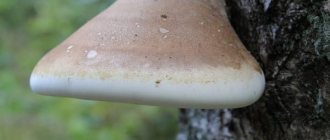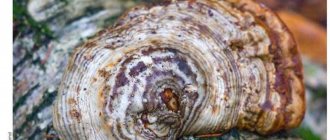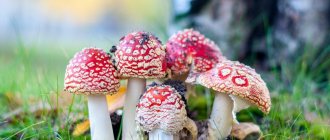General concepts
A parasitic fungus is completely dependent on its host, which ensures its existence. But at the same time, it gradually exhausts the host, so such organisms are considered a weakened form of predation. Plants and other organisms affected by parasitic fungi can live with them for many years. Their lifespan depends on the type of “settlers” and the characteristics of the owner. Thus, hardwood trees can live with such parasites for decades, while, for example, a poplar can die in a few years.
The distribution zone of these organisms is not limited to vegetation. There are fungi that are parasitic to humans and can cause very serious illnesses. They require timely treatment as they can lead to serious consequences. There are also plant parasitic fungi that attack various types of crops.
Pests in the human body
Fungi attack not only plants and animals; there are also examples of parasitic fungi that prefer the human body as housing and food. They most often settle on the skin or mucous membranes and can cause many dangerous dermatological diseases, such as:
- otitis;
- allergic reactions of varying severity;
- candidiasis;
- ringworm;
- psoriasis, etc.
Lower parasitic fungal microorganisms, such as mold, provoke serious diseases such as bronchitis and pneumonia. Do not underestimate the harm caused by any type of parasitic fungi, since in humans diseases spread quickly and are quite difficult and time-consuming to treat.
Fungal infections of plants cause irreparable damage to agriculture and forestry, so it is recommended to constantly carry out preventive measures in gardens, fields and forest areas, and if diseases are detected, you should begin to fight them as quickly as possible.
Types of parasitic fungi
Parasitic fungi are divided into two types.
- Obligate fungi (smut, rust, powdery mushrooms), distinguished by their narrow specialization. They have a limited range of potential hosts. They consume only a specific set of essential nutrients. The lifespan of these parasites directly depends on the life activity of the host. That is why their relationships (development cycles) are coordinated. Moreover, by the time the host dies, the parasite has time to form overwintering spores. These fungi penetrate the plant using hyphae (thread-like formations) that resemble a spider's web. They infect the host through wounds, stomata, cuticle, and epidermis. The hyphae branch and move deeper into the plant along the intercellular spaces. During their life activity, such mushrooms secrete enzymes - pectinases. With their help, they destroy the intercellular substance of the host, clearing the way for organs in the plant tissue. With the help of special suckers - haustoria - they penetrate cells and absorb nutrients from them. Their peculiarity is that the plasma membranes do not die or collapse.
- Facultative parasitic fungi that are saprotrophs. They adopt this lifestyle only from time to time. They are the ones who most often lead to the death of their owner. Saprophytic fungi are both parasites and scavengers that feed on the remains of the organisms they have destroyed. They do not form haustoria. The host plant tissue is destroyed by fungal pectinases. They cause soft tissue rot. Their cellulase then dissolves the plant cell wall and absorbs its contents. Unfortunately, facultative parasitic fungi, examples of which can be given for a very long time, are not distinguished by their narrow specialization. For example, late blight affects almost all representatives of nightshades (potatoes, tomatoes, peppers).
Edible and poisonous mushrooms
Edible mushrooms are called vegetable meat and are classified as gourmet foods. They contain 10-20% dry matter, including protein - 2-4%, fat - 1%. There are also sugary substances that improve the taste of mushrooms. There are about 40 species of edible mushrooms.
In early spring (April), white steppe mushrooms appear. These mushrooms are also found in desert and semi-desert areas. They have a tubular cap convex at the bottom and a dense stem. They should not be confused with the most important one - the porcini mushroom, which is also called boletus.
This mushroom grows under birch, spruce, pine, oak, beech and hornbeam. Without the participation of tree roots, mycelium can develop, but fruiting bodies are usually not formed.
Saffron milk caps are found in pine forests, spruce forests, boletuses - iodine aspens, under birch, less often - under oak, pine, spruce. Butter mushrooms, honey mushrooms, chanterelles, and champignons are also edible (Fig. 10).
Fig. 10 Edible mushrooms.
The truffle fruiting body develops in the surface layer of soil.
Forms a closed fruiting body, inside of which there are bags.
The false chanterelle, which belongs to the poisonous mushrooms, is very similar to the common chanterelle. The false chanterelle has a smooth cap surface and a reddish-yellow color. The common chanterelle has wavy edges and a light yellow cap on top.
If you break the cap, milky juice is released. The cap of the poisonous honey fungus is dark yellow below. The top of the cap and the stem are yellowish-green; there is a ring on the stem (Fig. 11).
Fig. 11 False chanterelles and honey mushrooms.
Poisonous mushrooms also include toadstool, which at first glance looks like a champignon. But the pale toadstool differs from the champignon in that the underside of its cap is light yellow and there is no ring on the stem. The champignon has a pink cap on the bottom and a ring on the stem.
Gray and red fly agarics are very poisonous (Fig. 12). The cap of the gray fly agaric is gray on top, with white spots. The cap of the red fly agaric is red with white spots.
Fig. 12 Inedible poisonous mushrooms (Amanita, pale pellet, dung beetle).
Inedible mushrooms called dung beetles grow on humus-rich soil. Their hats are bell-shaped, pointed upward, and their legs are long. When the caps ripen, the pulp of the spores dissolves into an ink-colored liquid; numerous spores are carried by insects that feed on this mass.
Important!
To avoid poisoning from mushrooms, it is very important to be able to distinguish them from each other. If the mushroom found looks like a poisonous one, it is better not to take it. Overripe mushrooms can also be poisonous.
Before eating, some mushrooms must be boiled twice and the water drained to get rid of toxic substances. Freshly picked mushrooms cannot be stored for more than a day.
Food prepared from fresh mushrooms should not be left until the second day.
Toxic substances contained in mushrooms can be preserved even after drying, salting, and canning.
Therefore, in winter you can be poisoned by mushrooms. Signs of mushroom poisoning appear after a few hours.
A poisoned person feels pain in the stomach, malaise, dizziness, convulsions and vomiting begin. The patient needs to be hospitalized urgently.
You need to know how to collect mushrooms. They are collected in the morning, without damaging the mycelium, carefully cutting them off with a knife at the base. Mushrooms that are too small are not collected, and then in such a place it will be possible to harvest mushrooms every year.
Variety of parasitic fungi
Fungi that are parasites of plants and other living organisms form an ecological group of almost 2000 species. Most of them belong to deuteromycetes and ascomycetes. Since these parasites interact differently with the body of their host, the relationship between them is divided into two groups of diseases.
- Mycoses that develop under the influence of direct parasitism of pathogenic microorganisms. They are divided into 2 groups. These include dermatomycoses that develop on the surface of the integument of a living organism, and deep (systemic) mycoses that affect internal organs.
- Mycotoxicoses, which are poisonings caused by the influence of toxins formed by pathogenic microorganisms. They can be caused by eating foods that have toxic fungi on them.
Nutrition method
For the normal functioning of any living organism, proteins (proteins), carbohydrates and fats (lipids) are necessary. Proteins are synthesized in cells from amino acids supplied to heterotrophs from the external environment. Fats are part of cell walls and become an energy reserve in case of carbohydrate deficiency. Complex carbohydrates are obtained from glucose and are energy sources. Plants synthesize complex carbohydrates from simple carbohydrates - starch and fiber. In animals they turn into glycogen, here fungi are completely similar to fauna, glycogen is also present in their body.
To obtain all these substances from the external environment, they must first decompose more complex compounds into simpler ones. After all, neither peptides, nor starch, nor fiber enter the cell. To do this, organisms release enzymes into the external environment. Some representatives of the kingdom, for example, yeast, do not have enzymes. Therefore, they live on a specific substrate of simple carbohydrates, which penetrates the cell walls.
Complex multicellular higher fungi synthesize enzymes in the mycelium, and some species also in fruiting bodies. Each variety has its own characteristics. Some produce enzymes that can dissolve a large number of substances. Others have only specific ones, for example, breaking down only keratin. This determines what medium they will grow on.
The body of multicellular species consists of special threads - hyphae. It is through their cells that nutrients are absorbed. Protein synthesis, the conversion of glucose into glycogen, and simple lipids into complex fats occur here. Hyphae are attached to the substrate. Depending on what environment and method of nutrition mushrooms choose, they are divided into:
- saprophytes or saprotrophs;
- parasites;
- symbiotics or symbionts.
Most representatives of the kingdom are saprophytes that settle on decaying remains. But there are thousands of parasitic species. Some have chosen a special way of interacting with other organisms - mutually beneficial symbiosis. Such mushrooms do not feed only at the expense of another organism, but help it obtain chemical elements from the external environment. This is their main difference from parasites.
Micro- and macroparasites
Parasitic fungi are divided into 2 main categories.
- Microparasites that reproduce inside the body of their host or in its cells. They belong to the class of chytridiomycetes. Found in algae, other fungi, invertebrate animals, and on the roots of land plants.
- Macroparasites that grow in the body of their host, but reproduce using special forms. Over time, they leave the host's body. This category includes representatives such as ascomycetes (for example, ergot), deuteromycetes, oomycetes (phytophthora), basidiomycetes (tinder fungus).
Forest parasitic microorganisms
Forest pests are common mushrooms that grow in forests, many of them are eaten by humans and animals. Trees are affected by parasitic organisms such as:
- Tinder fungus. It prefers to live in deciduous forests, but sometimes it can also be found on garden trees - pear or apple trees. It affects the bark of the host, eventually growing inside the trunk, causing the tree to rot from the inside and become rotten and hollow.
- Grifola curly. Just like the tinder fungus, it prefers deciduous forests. This edible mushroom is quite widespread in Russia. The life of a tree affected by griffola is reduced by at least 15 years. The species is listed in the Red Book of Russia, since in addition to harm, it also brings many benefits. Grifola is used to treat tuberculosis and stabilize blood cholesterol levels; it is also useful for vitamin deficiency.
- Autumn honey fungus is a dangerous parasitic fungus that, once settled on a tree, causes white rot. This species can infect about 200 different types of trees. The mycelium of the parasite looks like dense dark cords, which, growing, penetrate inside the tree and affect its cambial layer. The mycelium also releases poisonous toxins that gradually poison the tree. Infected young trees die after 3 years, old ones can survive up to 10 years.
- Winter honey fungus (Vlammulina velvetypodia) is a winter edible mushroom. It usually settles on stumps, but can also infect a living deciduous tree, leading to its death.
Infection with parasitic fungi causes enormous damage to forestry, because it leads to massive death of trees, because spores are carried by wind and insects over long distances, affecting vast areas of forests.
Smut mushrooms
A special place is occupied by parasitic smut fungi, the names of which are familiar only to specialists. These pathogenic microorganisms settle on higher plants. A parasitic fungus such as basidia tetracellata grows from a teliospore called smut, or chlamydospore. It has diokaryotic and intercellular mycelium. These parasitic fungi penetrate through the host's shoots. During sporulation, their mycelium breaks up into smut spores, which are dark in color. Plants affected by this parasite appear charred.
The spores of these parasites germinate in the spring. However, they can affect different parts of the plant. Over time, they divide reductionally, as a result of which promycelium is formed - basidia with spores. They have different gender characteristics. Smut fungi cause hypertrophy of plant tissues. They parasitize grain and cereal crops such as wheat, barley, oats, corn, and millet. Smut spores fall into the ground and onto grain during harvesting, and after spring sowing they actively develop on the young plant. They slow down the growth and reduce the yield of cereals by feeding on their juices. To prevent the appearance of these parasitic fungi, before sowing, planting material is treated with special preparations. In the wild, smut is also found on other plants of the cereal family.
Fungus smut
The fungus smut mainly affects cereals. It settles in the flower when it is already fertilized and a small grain rich in nutrients has appeared. At first the plant looks healthy, because the smut attacks the internal tissues, but by the time the grain is supposed to ripen, black smut spores appear in the ear instead. The plant looks like a charred firebrand, which is why the mushroom got its name.
Fungus smut
Ergot
These parasitic fungi, the names of which are familiar to every farmer, parasitize rye and various wild cereals. Ergot is also called queen horns because of the characteristic curved, hard structures that develop on the flowers of the rye ear. These growths are sclerotia of the parasite, which are oblong or triangular plexuses of the mycelium. They are black and purple in color. In some cases, they become covered with an easily erasable whitish coating. Their size is up to 3 cm in length and up to 6 mm in width. Ergot sclerotia developing on different types of cereal plants may have a different shape and size. The ovary of a flower infected with spores is destroyed over time. Instead of grains, resting stages of the fungus are formed in the ear - sclerotia, which easily overwinter until spring.
Tinder fungus, how to deal with it
The tinder fungus causes severe damage to forestry, gardening and park farms. It provokes the destruction of wood. Infection with spores occurs through damage to the bark of trees. Breaking branches, sunburn and many other factors contribute to the appearance of wounds. Spores enter through the problem area and grow into mycelium. The tinder fungus covers the entire core of the tree, destroying it and making it rotten.
The appearance of fruiting bodies on the surface of the tree occurs several years after infection. The tinder fungus resembles a hoof in shape and is very hard. Tree parasites can be located one above the other, forming shelves. In the lower part, the tinder fungus has small tubes in which spores mature. The tinder fungus lives for many years and increases in size every year.
Sick trees are susceptible to turning brown and developing cavities, as they become very fragile. The tinder fungus significantly reduces their life expectancy. Once the mycelium has penetrated the wood, it is not possible to stop its development. An infected tree will certainly die.
Measures to combat the parasite include preventing damage to the bark and branches. To get rid of the danger of infecting other trees, the tinder fungus must be knocked down and burned.
Rust or onion mushrooms
These parasitic fungi are microorganisms that develop on above-ground plant organs. Most of them die when the plants die, but in nature there are also perennial species of these mycoses. So, some of them easily survive winter in their roots. Rust fungi have strands of mycelium that are located between host cells. They are found almost everywhere and can infect fern and flowering plants. These parasites have 5 stages of development, and they can coexist simultaneously on the same plant.
Eating methods
In nature, there are 2 main methods of nutrition - heterotrophic and autotrophic. What is their difference? All animals, many bacteria and fungi are heterotrophs. These organisms are not capable of synthesizing organic substances from inorganic ones. They must receive the necessary connections from the external environment.
Autotrophs are plants and some bacteria. Their cells contain special green plastids - chloroplasts. They contain a green substance - chlorophyll. It catalyzes a reaction after which carbon dioxide, nitrogen and water, under the influence of light energy, are able to transform into complex organic compounds.
Thus, plants provide themselves with the building and energy materials from which they grow. From the external environment they receive only water, oxygen and minerals.
Fungi are called heterotrophs; they are not capable of independently synthesizing organic substances from inorganic ones. In this they are similar to animals. The second point that brings this kingdom closer to fauna is the ability to secrete enzymes to break down complex compounds. Only in animals this process takes place inside the body, and in fungi - in the external environment.
These organisms also have something in common with the plant kingdom. They are brought together by the way they absorb nutrients. It passes by absorption from the substrate through the cell wall. In the highest representatives of the kingdom, this occurs through a special organ - the mycelium. But they do not have chlorophyll, which means photosynthesis is impossible.
Fungi parasites of agricultural crops
In addition to ergot, rust and smut, which attack cereal crops, there are a huge number of fungi in nature that parasitize other agricultural plants. These include such dangerous diseases as late blight, fusarium, olpidium (“black leg”), powdery mildew, synchytrium (“potato cancer”), rot, botrytis, scab and many others. At the same time, they infect various types of crops, causing enormous damage to the national economy. Such parasitic fungi can develop on various parts of plants. Moreover, they affect not only annual vegetables, but also perennial shrubs and trees. Various fungicides are used to prevent and control fungal diseases. In some cases, treatment does not bring the expected result. In this case, plants affected by parasitic fungi are uprooted and burned. Sometimes it may be necessary to disinfect the soil with a furatsilin solution or heat treatment, since spores of some parasitic fungi can persist in the soil for a very long time.
Late blight
Late blight on potatoes. Photo: Rasbak/Wikimedia Commons
Late blight is a fungus that selectively affects nightshade crops (tomatoes, peppers, potatoes). Late blight can be recognized by brown spots on the leaves. On the underside of the leaf this spot has a characteristic whitish coating. Later, spots appear on the fruits. This parasite can destroy an entire tomato crop in a matter of days.
Polypores
Parasitic fungi on trees are very common. They can be of different sizes and colors. One of the most famous parasitic fungi among them is the tinder fungus. Such organisms belong to a non-systematic group of the basidiomycetes department. These are parasites that most often develop on wood. Sometimes they settle on the soil. Their distinctive feature is the tubular hymenophore. Polypore fungi have the following fruiting bodies: prostrate, cap-footed (sessile). The consistency of their pulp can be fleshy or hard (corky, woody, leathery). Previously, this group of parasitic fungi was considered as systematic, belonging to the family Polyporaceae, but after the 50s of the 20th century this interpretation was considered artificial. Today, experts consider the concept of “tinder fungi” to refer to the morphology of the parasite.
They destroy wood, thereby causing enormous damage to green spaces. Polypore spores penetrate the plant through wounds on the bark, frost holes, sunburn, and damage to branches. They develop quite quickly, and the mycelium penetrates all tissues of the tree. From the moment of infection by spores to the formation of an adult fruiting body, depending on its type, only a few years pass. Over time, the host plants of the fungus turn into dust. They are not suitable for further processing. The wood becomes brittle and affected trees often break from strong winds.
Polypores have the shape of a hoof (semicircle). They are often arranged in the form of “shelves” one above the other. Most of these parasites form perennial fruiting bodies. Numerous spores are formed in the small tubes that are located on their lower plane. If a parasitic fungus, tinder fungus, appears on a valuable tree, it must be cut off with a sharp knife or knocked down with a stick (if it is high) and burned. An infected tree lives much shorter than a healthy one. Some parasites, such as birch chaga, are used in folk medicine.
Parasites in the fields
Parasitic on agricultural crops:
- smut;
- ergot;
- rust mushroom.
Smut mushrooms
This group of parasitic fungi prefers cereal crops. Most often they settle on barley, wheat or oats. Sometimes found in corn fields and millet. There are a large number of varieties of smut fungi, each of them affects a specific crop. About 20 species are common in Russia. The ability to adapt to any climatic conditions greatly complicates the fight against smut. A coating similar to soot appears on the affected plants (fruits, seeds). Spores spread quickly. Smut can destroy the entire crop.
The fight against the parasite is not limited to the destruction of affected ears. The spores remain in the ground and form mycelium in new shoots. The fight against smut includes disinfection of the land, which means that for several years it is better to plant plants on the site that are not affected by the parasitic fungus of this variety. You can plant hybrid varieties of cereals that are resistant to smut.
Ergot
Ergot is a parasitic fungus that prefers wheat. Sometimes it affects other cereals. Ergot can cause harm to the human body. It causes eating disorders and poisoning. After the wheat begins to ear, the first signs of damage appear. Sweet secretions with a specific odor appear on the spikelets, attracting various insects (flies, midges, etc.). These insects carry the spores. After the sweet discharge, sclerotia appear. They are shaped like horns and are dark purple in color, sometimes with a purple tint. Their length varies from 3 to 5 cm. Healthy wheat grains do not exceed 1.5-2 cm in length. Fallen horns that have overwintered in the ground are a source of disease.
Irina Selyutina (Biologist):
Ergot is one of the most famous poisonous (toxic) mushrooms. The toxicity caused by ergot alkaloids was previously widespread in Europe, with death tolls approaching those of the plague and cholera. Clavicepsotoxicosis, or ergotism, is caused by the ability of ergot toxins to cause contractions of smooth muscles and blood vessels, as well as effects on the nervous system. It is known in two forms:
- gangrenous (“Antonov fire”);
- convulsive (“angry writhing”).
It is difficult to destroy a harmful microorganism that appears on the site. To minimize the likelihood of infection in grain fields, it is necessary to use high-quality planting material and promptly destroy weeds. It is advisable to disinfect the seeds and treat the fields with fungicides. Most often, ergot appears on neglected plots of land.
Rust mushroom
This parasite got its name due to its appearance. It prefers cereal crops, but sometimes appears on ferns and flower crops. Brown or red-brown lesions appear on plants. Depending on the type of rust fungus, and there are a huge number of them, this formation has the shape of a bowl, glass or cylinder. Sometimes it is dispersed almost all over the leaves and stems of plants, and sometimes it is not. Leaves of diseased plants change shape and turn yellow.
Rust fungi are obligate parasites. This means that their life cycle and the life cycle of the host are coordinated with each other and the parasite is not able to survive without its host. Often they require 2 different hosts for their development. In the case of grain crops, the second host is barberry. To avoid contamination of fields, these crops are not planted nearby. It is also better to use hybrid varieties resistant to the parasite, harvest and fertilize in a timely manner. Affected crops are treated with fungicides.
Symbiosis
This method of interaction is quite widespread in nature, although it is very specific. The two organisms use each other's features and mutually benefit. Cap species often enter into symbiosis with trees in the forest. Their mycelium envelops the roots of the plant and penetrates the cells. Its area reaches 1-6 km² and even more.
The hyphae absorb minerals and share them with the tree. Thus, almost the entire periodic table comes to him. The suction surface of the roots increases, which stimulates the growth of oak, birch, aspen or other species. Some trees cannot even exist without their helpers; the villi of their roots atrophy.
The fungus receives organic substances from the tree in large doses, which it synthesizes in the light through photosynthesis. Often these compounds enter the mycelium in a simple form accessible to cells.
Irina Selyutina (Biologist):
The mutually beneficial cooperation between a fungus and a plant is called mycorrhiza or fungal root. This term was introduced into biology in 1885 by the German biologist A.B. Frank.
The following types of mycorrhiza are distinguished:
- Ectomycorrhiza: fungal hyphae entwine the root, forming a sheath, but do not penetrate the root cells, but only into the intercellular spaces.
- Endomycorrhiza: fungal hyphae penetrate into root cells through pores in the cell membranes and can form clusters there that resemble tangles. Hyphae within the cell can branch; these branches are called arbuscules.
- Ectoendomycorrhiza: represents an intermediate option between the previous ones.
As a result of these normalized mycorrhizal relationships, species are more likely to survive natural competition.
Lichens
The symbiosis of fungi and algae gave rise to a special type of organisms - lichens, which belong to the kingdom Mushrooms. They are sometimes mistakenly called autotrophic fungi. But as part of lichens, the fungus continues to feed heterotrophically.
Irina Selyutina (Biologist):
The body of lichens is called slang and consists of fungal hyphae and unicellular algae. The algal component is also called a phycobiont; it can be represented by cyanobacteria, green or yellow-green algae. The fungal component is a mycobiont, usually represented by marsupial and basidiomycetes. In this original organism, the fungus supplies the algae with water and minerals, and the algae, in turn, synthesize organic compounds. Despite the seemingly mutually beneficial union of two representatives of different kingdoms, they talk about such a phenomenon as obligate parasitism on the part of the fungus, because if this relationship is destroyed, the algae will survive in an independent life, but the mushroom will die.
The photosynthesis component in this tandem is carried out by algae, which receive minerals from their “partner”. Fungal hyphae attach to the substrate (soil, tree bark) and absorb water and ash elements from there and transfer them to algae. They produce organic matter from carbon, hydrogen and nitrogen, which the fungi then use.
